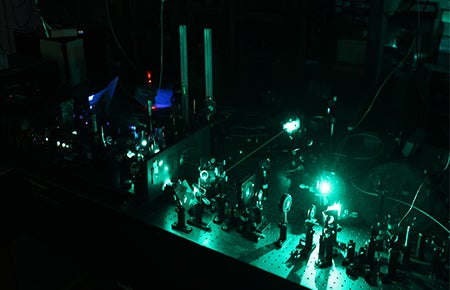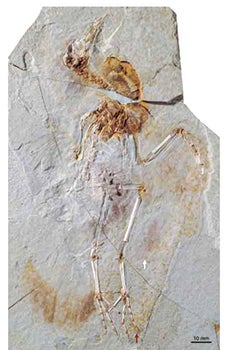
Prestigious science organization adds two USC Dornsife professors to its ranks
Recognition by professional peers ranks among the highest honors for scientists. This year, members of the world’s largest general scientific society confirmed their professional regard for two more professors at the USC Dornsife College of Letters, Arts and Sciences.
Stephen Bradforth, divisional dean for natural sciences and mathematics and professor of chemistry, and Luis Chiappe, adjunct professor of Earth sciences and biological sciences, have been elected Fellows of the American Association for the Advancement of Science (AAAS).

Bradforth was recognized in part for his work in “tracking electronic structure that guides chemical reactivity within complex environments.” He and his team collaborate broadly with researchers in electrical and biomedical engineering, cancer nanomedicine and physics as well as with theoretical and experimental chemists at USC and throughout the world. His work targets a deeper understanding of how the interconnected motions of molecules impact chemical reactions within cells and similar environments. The studies include optimizing energy conversion in solar cells, understanding how sunlight-induced damage takes place in DNA and improving radiation treatments using nanoparticle therapies to kill cancer cells.
The AAAS election also recognized Bradforth for challenging teaching quality and innovation in the undergraduate STEM (science, technology, engineering and mathematics) fields. As a USC Dornsife faculty fellow, Bradforth designed a seminar to teach incoming freshmen about the Global Energy Crisis. He is also active in recent national efforts to reform undergraduate STEM education in research-intensive universities. At USC, his efforts have earned him honors that include the Mellon Mentoring award for mentoring of faculty and a Raubenheimer junior faculty award.
“For the first part of my career, my strong focus was on my laboratory, and on chemistry in both research, education and service,” Bradforth said. “Over the past few years, I’ve been increasingly responsible for setting directions both on campus and in projects nationally that address science more broadly. It has been very rewarding, and this honor reinforces making contributions to strengthen science training and practice.”

Chiappe, who is senior vice president of research and collections and Gretchen Augustyn Director of the Dinosaur Institute at the Natural History Museum of Los Angeles County, was elected for his distinguished contributions to the field of paleontology, particularly the origin and early evolution of birds. He is considered a world authority on the subject. Chiappe is also widely known for discovering the largest dinosaur nesting site, in Patagonia in 1997.
Chiappe is also committed to science communication. This work is exemplified in the Natural History Museum’s Jane G. Pisano Dinosaur Hall, an award-winning permanent exhibition that he curated about the nature of science and the lives of dinosaurs, as well as his many popular books and articles. He is the author of Walking on Eggs: The Astonishing Discovery of Thousands of Dinosaur Eggs in the Badlands of Patagonia (Scribner, 2001, Glorified Dinosaurs: The Origin and Early Evolution of Birds (Wiley-Liss, 2007) and Birds of Stone: Chinese Avian Fossils from the Age of Dinosaurs (Johns Hopkins University Press, 2016). His research has been published in nearly 200 scholarly articles. He is also a Guggenheim Fellow and a Humboldt Awardee.
AAAS Fellows are elected based on their scientifically or socially distinguished efforts to advance science or its applications. This year, 443 scientists will be presented with an official certificate and a gold and blue (representing science and engineering, respectively) rosette pin on Feb. 15 during the 2020 society’s Annual Meeting in Seattle.
The nonprofit AAAS, founded in 1848, serves 10 million individuals through more than 250 affiliated societies and academies of science. AAAS, which publishes the journal Science, aims to “advance science and serve society.”